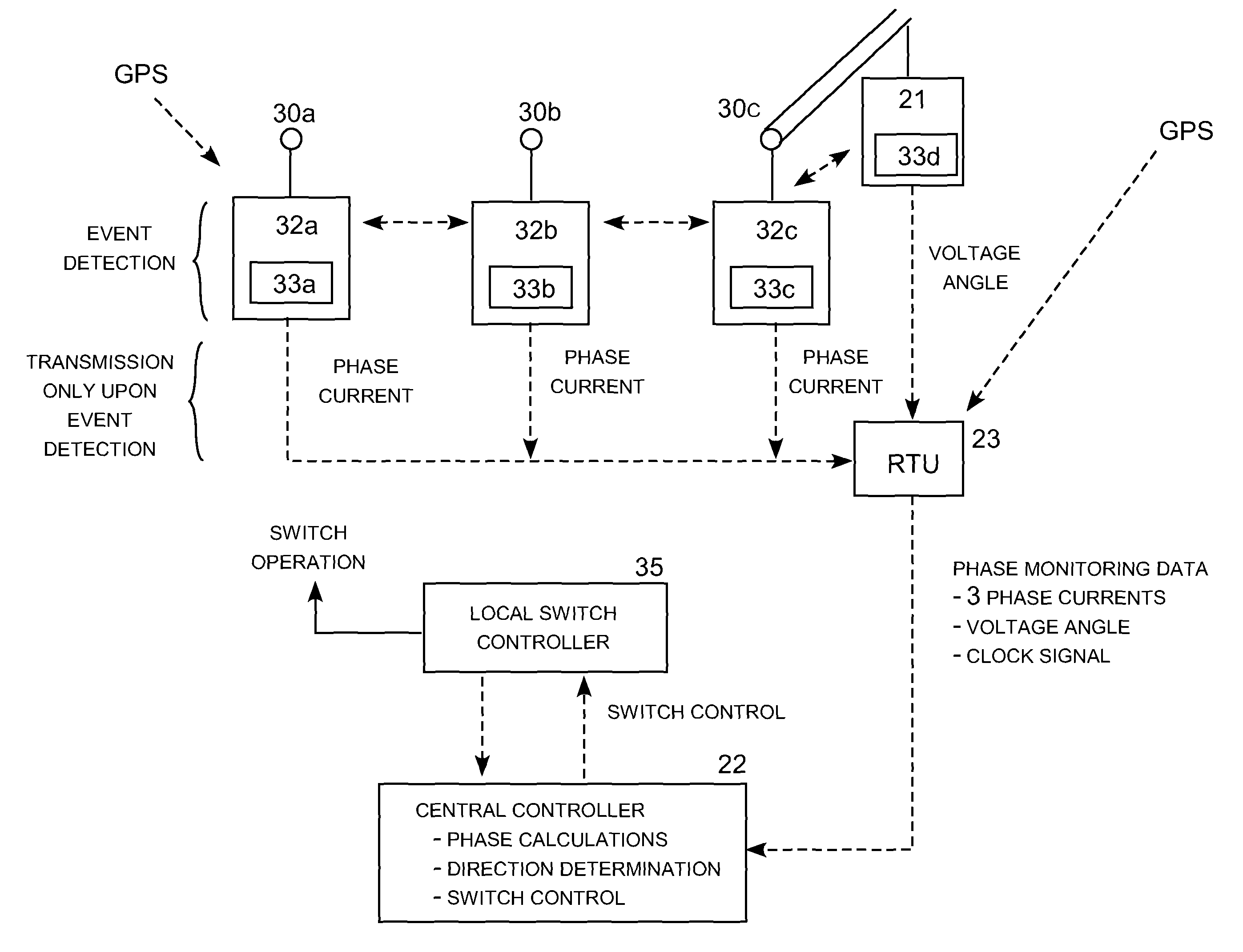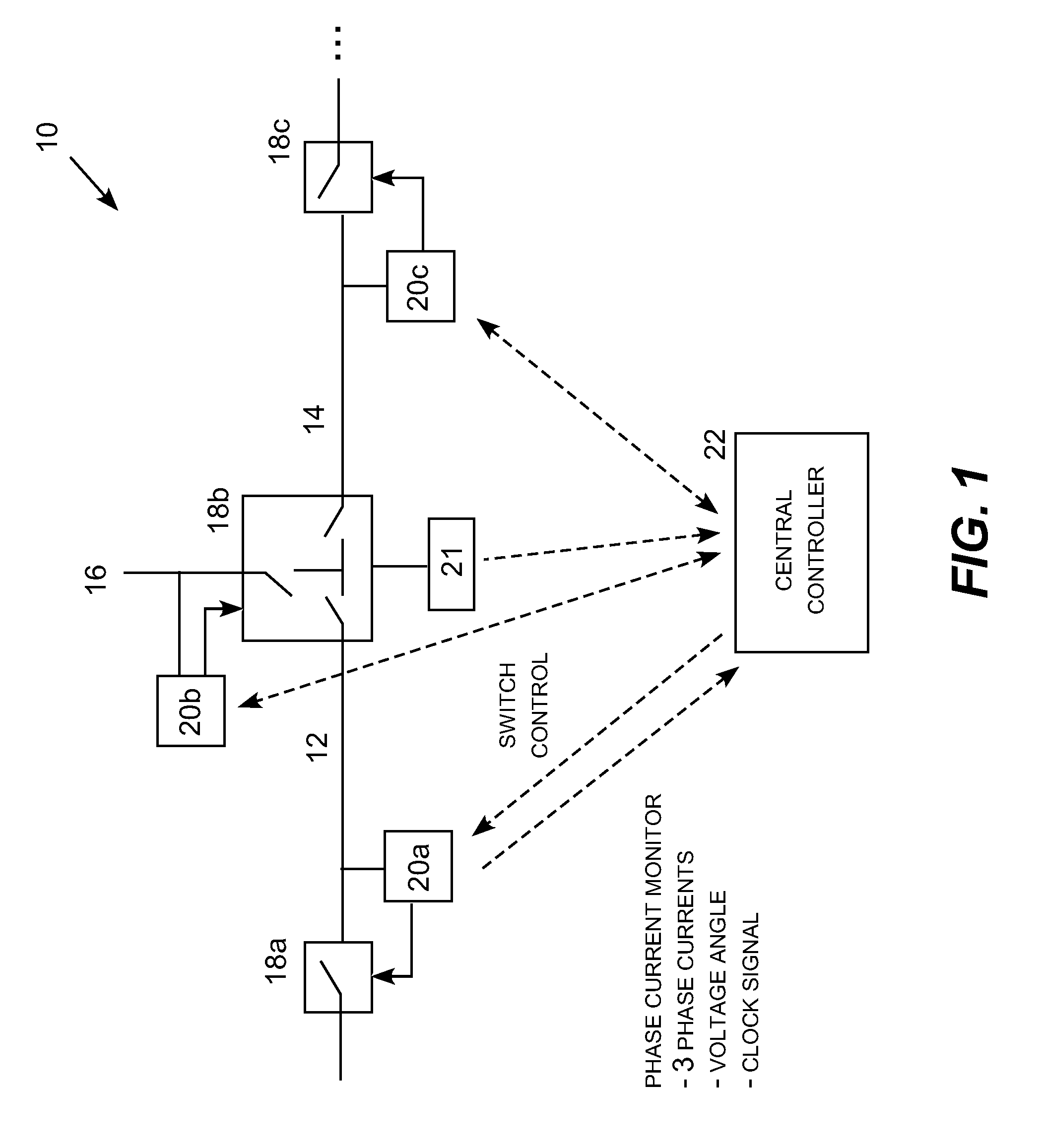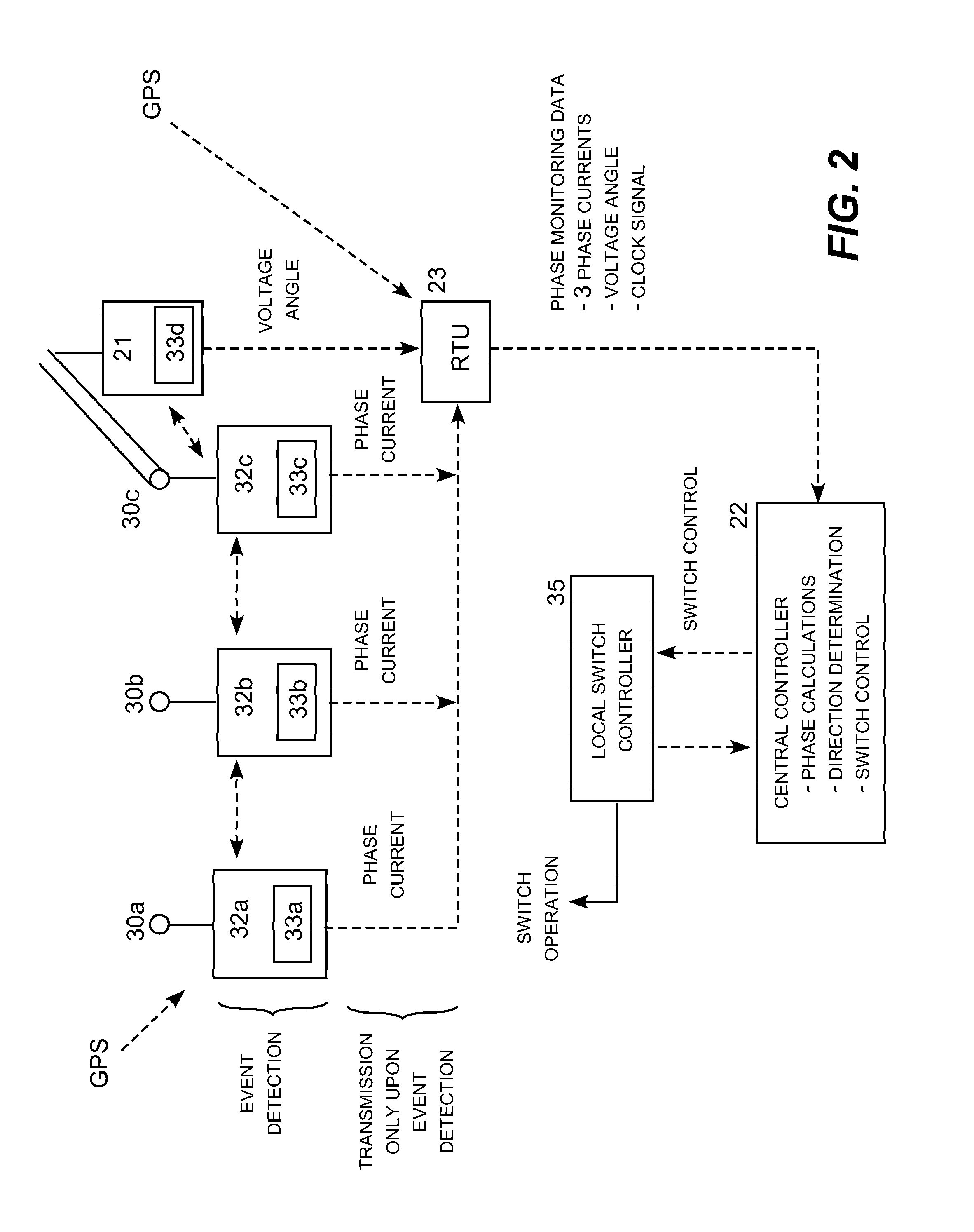High-impedance fault detection and isolation system
a fault detection and isolation system technology, applied in the field of electric power systems, can solve the problems of low-current faults, ineffective detection of high-impedance, low-current faults, etc., and achieve the effect of improving network safety and robust high-impedance fault isolation
- Summary
- Abstract
- Description
- Claims
- Application Information
AI Technical Summary
Benefits of technology
Problems solved by technology
Method used
Image
Examples
Embodiment Construction
[0018]The present invention may be embodied in a high-impedance fault detection and isolation system for distribution circuits using multiple independent phase current sensors producing asynchronous event data. Specific techniques for detecting the presence of high-impedance faults using simultaneous three-phase current monitors are described in U.S. patent application Ser. No. 13 / 217,318; specific techniques for determining the direction to the fault from the sequenced currents are described in U.S. patent application Ser. No. 13 / 229,808; and specific techniques for sectionalizing the distribution network to isolate detected faults are described in U.S. patent application Ser. No. 13 / 229,095, which are incorporated by reference.
[0019]While the techniques described in these prior applications can be used to successfully detect, locate and respond to high-impedance faults, obtaining synchronized three-phase current and voltage monitoring data can be a relatively expensive solution. I...
PUM
 Login to view more
Login to view more Abstract
Description
Claims
Application Information
 Login to view more
Login to view more - R&D Engineer
- R&D Manager
- IP Professional
- Industry Leading Data Capabilities
- Powerful AI technology
- Patent DNA Extraction
Browse by: Latest US Patents, China's latest patents, Technical Efficacy Thesaurus, Application Domain, Technology Topic.
© 2024 PatSnap. All rights reserved.Legal|Privacy policy|Modern Slavery Act Transparency Statement|Sitemap



